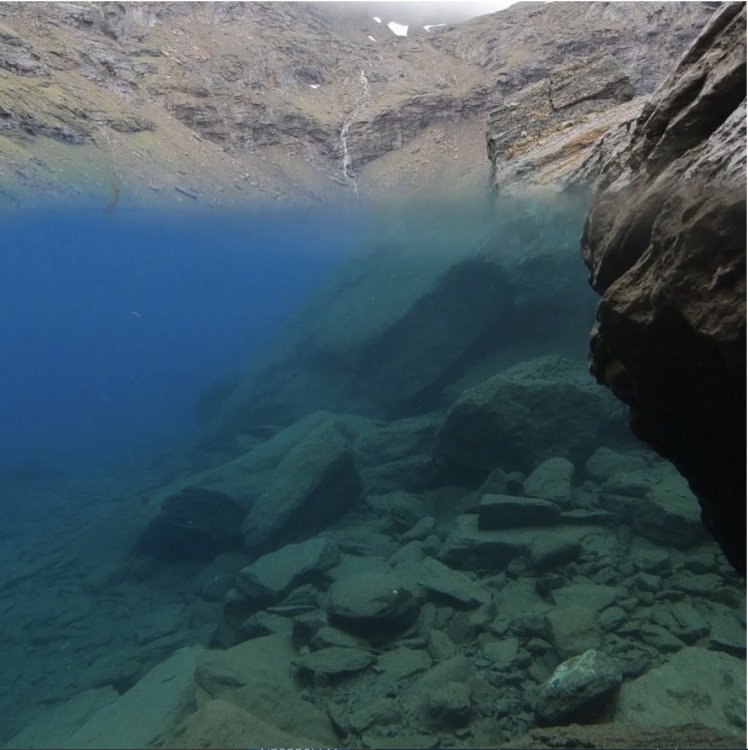-
Posts
2578 -
Joined
-
Days Won
21
Content Type
Profiles
Forums
Events
Everything posted by Ghideon
-
As far as I know that is an unsolved problem at this time*. *) Assuming the context is computer science where a one-way function is a function that is easy to compute on every input, but "hard" to invert given the image of a random input. https://en.wikipedia.org/wiki/One-way_function;
-

Can be that the Natural Numbers are Finite?
Ghideon replied to Conscious Energy's topic in General Philosophy
My personal (and rather naive) answer: We do not know if the universe* is infinite or finite and if there are infinite or finite number of particles. Mathematics contain tools and concepts usable for both cases. *) The observable universe is finite and contains a finite amount of matter. -

For scan a QR code, which app do I need?
Ghideon replied to PeterBushMan's topic in Computer Science
Ok. Very old phones have no camera. So a newer phone may be required to solve your issue. (You may get more helpful responses if you provide more context) -
I know about the gravitational redshift but I do not see the connection to a change in size. Your statements seem to imply that objects very near the event horizon of a black hole will be extremely long according to an observer far from the black hole. When the redshift is extreme the change in length will be extreme. Is this a correct interpretation of your opening post?
-

For scan a QR code, which app do I need?
Ghideon replied to PeterBushMan's topic in Computer Science
It depends on what the code represent. As said above many phones can recognise a QR code by using the native camera app. Interpreting the QR code and then triggering the correct action may require scanning the QR code with the applicable 3rd party application. -
Using @Sensei recommendation: NSolve [(x^4/(35794234179725868774991807832568455403003778024228226193532908190484670252364677411513516111204504060317568667^2 + x)) == 1,x] Gives the result: (Note: I do not have access to a local installation, I used wolframalpha.com)
-
No worries @joigus! (In spirit of your opening post I showed the picture to one of my kids. Result was an interesting conversation about nature, digital art, Lord of the Rings, Angkor Wat, fiction and non-fiction.)
-
Please note what precision you need to get a useful outcome; truncation error and roundoff error may cause unwanted results. Not sure this will be an issue but the screenshots displays numbers that differs by a lot. Also note that there may be differences if you wish to perform integer or floating point arithmetics.
-

What keeps the universe going and will it stop or go on forever?
Ghideon replied to Alex Mercer's topic in Other Sciences
Not sure what the question is, maybe you wish to discuss the ultimate fate of the universe and what alternatives the current models for the universe may contain? For instance Big Rip* (Universe continues to expand) vs Big Crunch* (Expansion will halt and a contraction will follow) ? *) https://en.wikipedia.org/wiki/Ultimate_fate_of_the_universe#Theories_about_the_end_of_the_universe -
I agree, the tepui does not seem to be attached. And there seems to be no room for a large enough lake. Edit: here is a link to discussion about the water: Note that the picture is posted in the art section.
-
Thanks! I interpreted* the arc over the waterfall in the center (and other arcs) as a constructed bridge. I wonder where the water comes from? *) The solution might be wikipedia.org/Pareidolia, I'm a fan of art that blends nature and (large scale) constructions, for instance Pieter Bruegel's Tower of Babel (wikipedia.org/The_Tower_of_Babel (jpeg) )
-
-
I recently visited what is claimed to be the clearest* lake in the country and this picture was unexpected. I tried to film the clear water and the resulting film was not anything worth sharing, but this single frame from the moment when the camera lens is half submerged turned out pretty well. *) I have not found any conclusive official measurements, maybe it is tricky to perform standardised measurement as the bottom is visible from the surface. https://en.wikipedia.org/wiki/Rissajaure
-

Existence is...the Absolute Singularity.
Ghideon replied to WendyDarling's topic in General Philosophy
A quick example from physics to show how "A or B" may not be applicable: where do you place virtual particles that appear in vacuum fluctuation? Do they go into A or B per your ideas? https://en.wikipedia.org/wiki/Quantum_fluctuation -
Ok. As Bob is unable to communicate and hence participate in a fruitful discussion I'll move on to other more interesting threads.
-
That seems to imply that it does not matter what phrase, word or other symbol we use instead of "yes" and "no", for instance Y/N or "0" and "1". Every question with two options will be answered by yes=no (or 0=1 in digital form). This also applies to a question of how to encode Bobs own arguments into text or speech. since yes=no (or 1=0) we may according to Bob write his own arguments as a stream of zeroes 000000... or one single zero "0". From an information theory point of view it means that there is no entropy* and no conversation or information content is possible. The fact that Bob is able to communicate and argue for his case means he is inherently wrong. *) The "informational value" of a communicated message depends on the degree to which the content of the message is surprising. If an event is very probable, it is no surprise (and generally uninteresting) when that event happens as expected; hence transmission of such a message carries very little new information. https://en.wikipedia.org/wiki/Entropy_(information_theory)
-
This comment got me thinking of how libraries are organised and current standards for classification of literature and related material. Maybe @Barmaley could start from an existing standard and remove parts that does not apply to the project*? An example of a standard is UDC: (Source https://en.wikipedia.org/wiki/Universal_Decimal_Classification) The top classes of UDC are: 0 Science and knowledge. Organization. Computer science. Information. Documentation. Librarianship. Institution. Publications 1 Philosophy. Psychology 2 Religion. Theology 3 Social sciences 4 (Vacant) 5 Mathematics. Natural sciences 6 Applied sciences. Medicine. Technology 7 The arts. Recreation. Entertainment. Sport 8 Language. Linguistics. Literature 9 Geography. Biography. History *) Disclaimer: I have not checked if and how these kind of standards, UDC or other, are licensed.
-
The scales in the plots are very different, maybe you mean "patterns" are something like these approximations*? [math]\frac {x^3 * p^{2}}{ p^{2} + x} \approx \begin{cases}x^3 & x \ll p,p\gg0 \\x^2*p^2 & x \gg p^2,p \neq 0 \\0 & x \approx 0\end{cases}[/math]. Note the slightly more general expression using an arbitrary number p instead of 85. I do not see a connection to primes. *) I am not interested enough to try to provide a mathematical proof.
-

Relativity with regard to CMBR and galaxy types
Ghideon replied to MarkE's topic in Astronomy and Cosmology
I agree. I also agree to @MigLs "yes" answer and the motivation. My "no" answer assumed that the question's "exact" requires that any patterns in the small temperature fluctuations are identical; that a detailed all-sky picture of CMBR would be independent of location. In the words: I assume that an image, such as the on based on WMAP data below, will may not be exactly the same if the data was gathered in a very distant location from our galaxy. (Source: https://map.gsfc.nasa.gov/media/121238/index.html) -

Relativity with regard to CMBR and galaxy types
Ghideon replied to MarkE's topic in Astronomy and Cosmology
My answers as I understand the mainstream science*. 1: no 2: no 1: Their map of the subtle fluctuations in temperature would look different. The average temperature of their CMBR measurement could be very similar to the temperature we measure, if we assume they perform their measurements are done at present times. A measurement performed much earlier or later would deviate from our current measurements. If universe continues to expand the cosmic microwave background will continue redshifting. 2: The quasars we observe may not be visible at another location random location. Line of sight and distance are two factors that I think of. *) https://en.wikipedia.org/wiki/Cosmic_microwave_background -
Thanks for the followup, I have nothing to contribute with regarding this.





